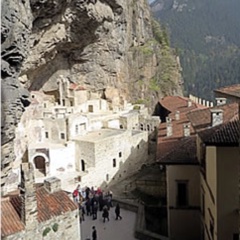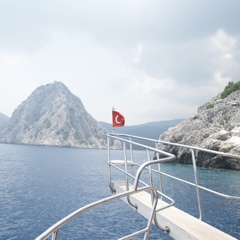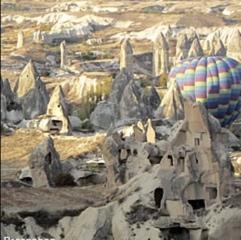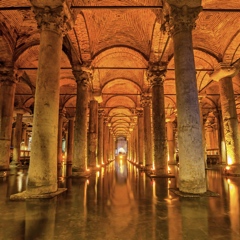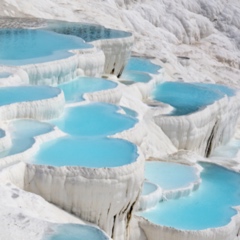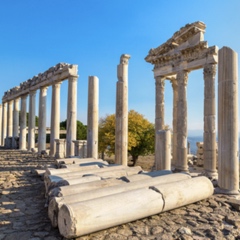Basilica Cistern, Istanbul
Beneath Istanbul lie hundreds of gloomy Byzantine cisterns. They're left from the days when Istanbul was Constantinople. Most large and important Byzantine buildings provided for storage of water beneath them.
The grandest of all is the Basilica Cistern (Yerebatan Sarnıç), so called because it lay beneath the Stoa Basilica, a grand Byzantine public square. It's also called the Sunken Palace Cistern (Yerebatan Saray Sarnıçı).
Location
The Basilica Cistern is located near many other tourists attractions in Sultanahmet Square, at the northeastern end of the Hippodrome, just off of Divan Yolu. As it is close to Blue Mosque and Ayasofya, you can easily combine your visits.
The best way to get there is by using the tram and getting off at the station called Sultanahmet / Blue Mosque.
Opening Hours
You can visit the Basilica Cistern daily, from 9 am to 7 pm.
Tickets
You can get the most updated pricing information and purchase tickets on the official website. It’s recommended to purchase tickets in advance to avoid waiting in line.

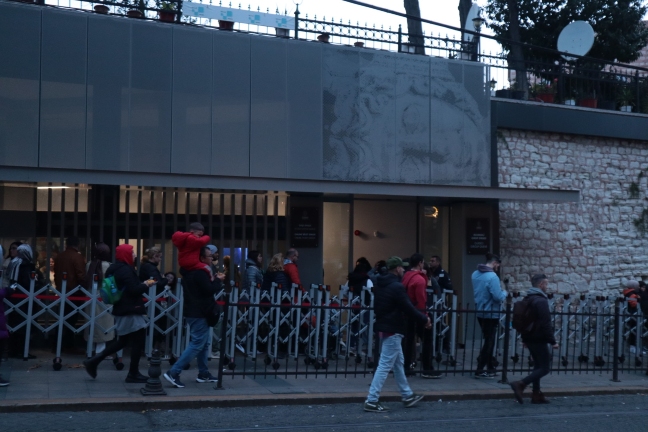
About The Basilica
One of Istanbul’s most prominent structures, the Basilica Cistern, was built by the Eastern Roman Emperor Justinian in the 6th Century. Lost to memory, it was rediscovered by Petrus Gyllius, who came to Constantinople in search of Byzantine monuments. Gyllius, who noticed that local people got their water by lowering buckets through holes in the floors of their houses, found an entrance and thus put it back on the map.
The Basilica Cistern is only one of the hundred different Byzantine cisterns lying beneath Istanbul. Although Istanbul was surrounded by sea from 3 sides, in terms of drinking water it had a shortage, which gave birth to the various cistern constructions around the city. For centuries, the Bascilia Cistern was used to distribute water for the needs of the city, obtained from historical waterways. The Ottomans used it to supply Topkapı Palace.
The Basilica Cistern is impressive because of its size, measuring 138 meters (453 feet) long and 64.6 meters (212 feet) wide, covering nearly 9800 square meters (2.4 acres); its capacity (80,000 cubic meters—over 21 million US gallons) and its 336 marble columns.
James Bond fans may remember the movie From Russia With Love when Bond is rowing in a small boat through a forest of marble columns. That scene was filmed in Yerebatan Sarnıcı / Basilica Cistern.
The columns carved with a variety of styles behold various mysteries. One of which is called the teardrop column, or crying column. As it is said, this column was built as a representation for the hardworking slaves who died during its construction. One of the most prominent features of the Basilica Cistern is Medusa’s head.


Medusa’s Head
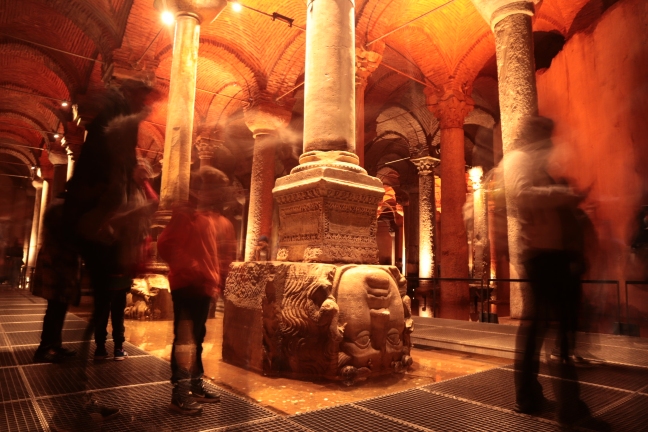
According to myth, Medusa was a beautiful woman, with pitch-black eyes, long hair, and a picture-perfect body. Conflict arose when both Medusa and Athena were in love with Zeus’ son, Perseus. As such, Athena became jealous of Medusa, and according to the legend, turned Medusa's hair into snakes. On top of that, it was said that everyone whom Medusa looked at was turned into stone. Suffering from this affliction, Medusa turned herself into stone by looking at her reflection in the mirror. This is the reason why the stone heads of Medusa are placed in reverse, removing her ability to turn the viewers into stone. However, some believe that the wishes of the visitors will be fulfilled by throwing coins into the water of the cistern where Medusa’s head lays.
— by Tom Brosnahan, updated by Julide Koca





